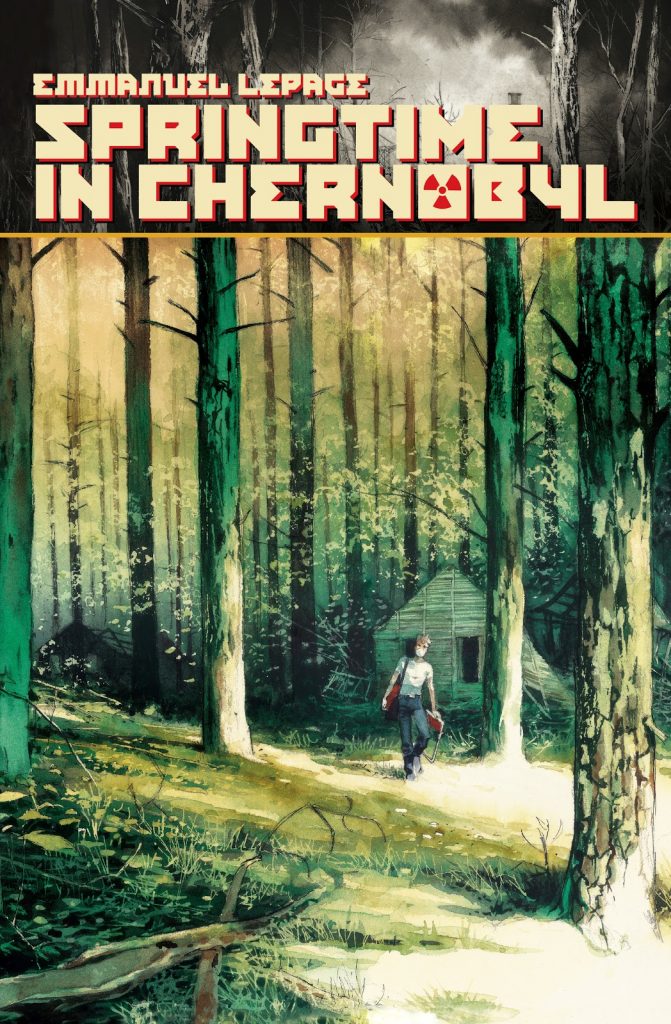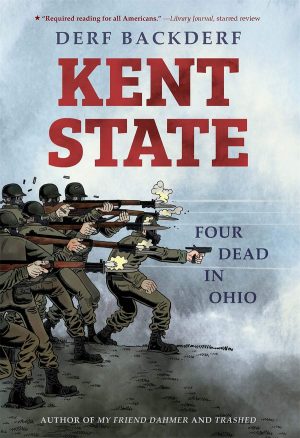Review by Frank Plowright
With the Chernobyl 1986 drama so acclaimed in 2019 it was the perfect time for an English translation of Emmanuel Lepage’s graphic novel exploration of the same events.
Lepage begins in 2008 with his own journey to Chernobyl by train, illustrations of that accompanied by harrowing quoted accounts of the medical impact of uncontained radiation seeping into the land and into people back in 1986. He then heads into the past and the first awareness of a nuclear power plant disaster. As with the drama, so many aspects are just jaw-dropping, starting with the official denial that anything had happened in Ukraine while Sweden was simultaneously tracking radioactive clouds blown across their country. However, it’s not just the Soviet Union that lied, and Lepage’s reportage displays no lessons were learned. When covid swept the world over thirty years later politicians still prioritised the economy over public health. The sheer numbers Lepage supplies are astounding. Here’s one: three million children require lifelong medical treatment due to the nuclear leak at Chernobyl.
Having delivered the history, Lepage continues his personal experiences. His involvement comes via a French artists’ group establishing two month residencies twenty miles from the Chernobyl exclusion zone, the resulting projects having a charitable purpose benefiting children in contaminated zones. There are plenty of considerations. Radiation levels are still high, and a few months before the planned trip he develops a form of carpal tunnel syndrome leaving him unable to draw, and without a full protective bodysuit stops within the exclusion zone are limited to twenty minutes. A constant ticking accompanies these stops, representing both the evaporating time and the clicking of the device measuring ambient radiation.
A significant proportion of Springtime in Chernbolyl is illustrated in a grey wash, reflecting ash deposited over Eastern Europe in the days after the disaster. An occasional use of muted watercolour represents broader life, or the luminous effect of so much vegetation. Lapage is an extraordinarily precise artist. At times the work involved in the illustrative representation even distracts him from the ongoing dangers. Perhaps aware of this, Lepage occasionally also includes the sketched versions made at the time. He certainly notes the difficulty of conveying what looks so ordinary, yet is contaminated by the invisible, something he can neither see nor feel, a little too extensively as he questions himself and considers artistic integrity late on.
There’s a noticeable drifting as Lepage becomes more integrated into the local community, finding a welcoming friendship, but the resulting illustrations could have been generated anywhere. It’s a nuanced point before confirmation. Despite that, when more on message Springtime in Chernobyl is a magnificent piece of reportage. Lepage is open-minded with the concerns of any knowledgeable reader, and presents his observations in a non-judgemental way, while knowing they’ll astound. Is it greed or desperation that leads people to loot goods and metal from the Chernobyl site, knowing the level of radioactivity? Why is it that some people have lived into middle age with no effects? Why do people stay in an area that will never again be developed? Similar questions can be asked about people in any neighbourhood, which is not far from the conclusion Lepage reaches. Shocking, profoundly moving and always understanding, this is a graphic novel to be read by anyone fascinated by the human spirit.





